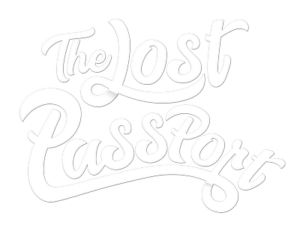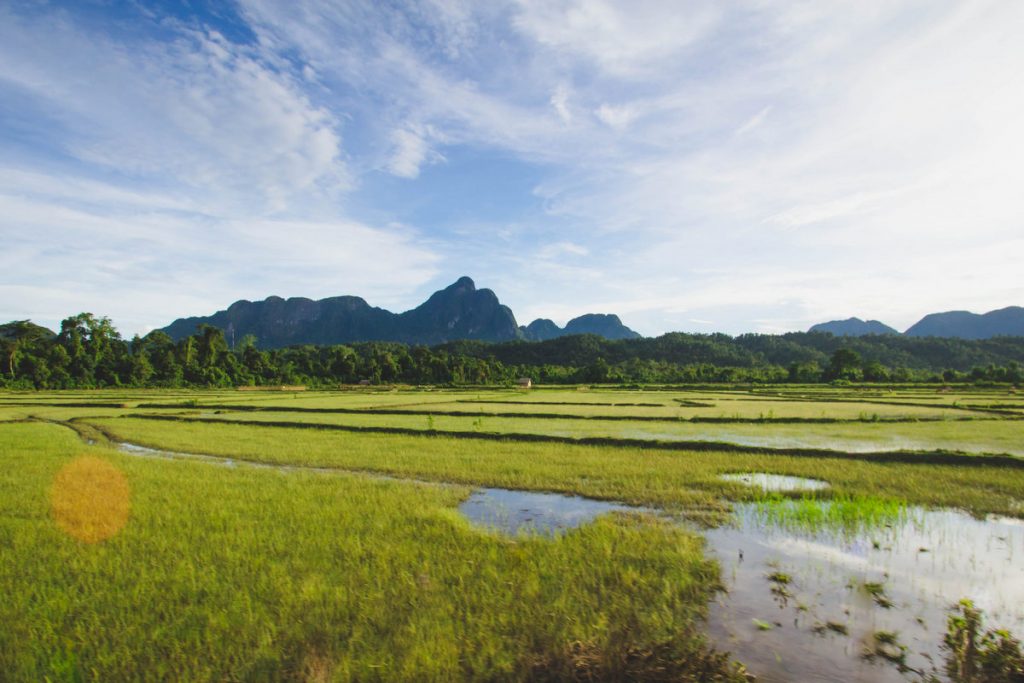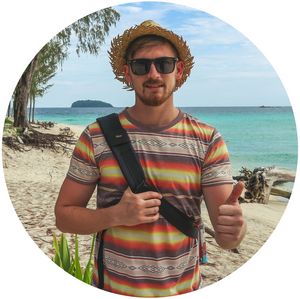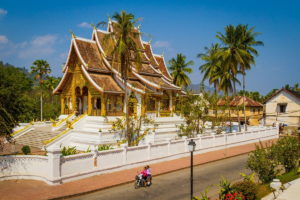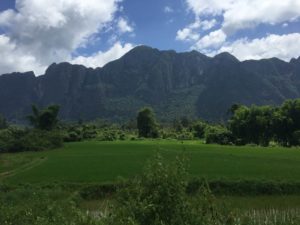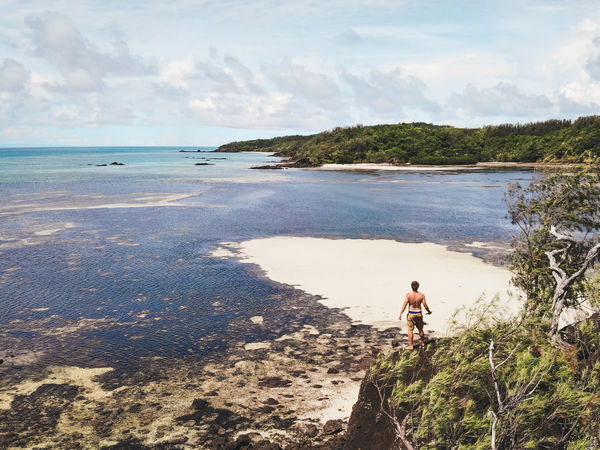Two Weeks in Laos, an Ideal itinerary
I didn’t plan this two week Laos travel itinerary before I went. It happened by mistake. I was about to overstay my third visa extension in Vietnam while completing my epic Vietnam motorbike route, and that apparently wasn’t a good idea.
I crossed the border from Vietnam to Laos taking an overnight bus from Hanoi to Vientiane. The whole 36-hour journey of it. Without any plans in Laos, I really wondered what this country might have in store.
I quickly planned out my Laos travel itinerary working north from Vientiane towards the China border. Here I’ll give you a breakdown of the key locations, and what to experience at each of them.
[toc]
Vientiane (Days 1 to 3)
Whether your Laos travel itinerary takes you north or south, the first stop for most people is Vientiane. It is the land crossing point from Nong Khai in Thailand, the major stop for buses from Hanoi in Vietnam, and has the country’s main international airport.
So, what’s to love about this city?
Vientiane combines a mix of French and Laotian culture. Throughout the city, you will find interesting French architecture like the Patuxai Victory Monument or Lane Xang Avenue. You can easily spend a day walking around town checking out the French influence on Laos. Along the way, I suggest picking up a hot baguette from one of the many bakeries in true French-Laotian style.
You will quickly learn that Vientiane is hot, really hot. Laos doesn’t have a coastline, so you’ll be hard pressed finding a beach. Instead, people head to one of the hotels to cool off in a swimming pool. Check out this list of swimming pools and entry fees in Vientiane.
The promenade along the Mekong River is one of the most popular spots to hang out in the afternoon. Head down here about an hour before sunset and there will be lots of food stalls about. Take your food down to the river and watch the sunset over Thailand on the other side of the river.
Vang Vieng (Days 4 to 6)
Next, we start the journey north. First stop Vang Vieng, the home of tubing. You can easily get to Vang Vieng from Vientiane by minivan (tickets and timetables).
Vang Vieng was once famous for raging parties with Australians dying in the river. These days the village has toned it down quite a bit after being “banned” some years back. While there are fewer bars these days, tubing and the riverside parties do still exist. And yes, there are still lots of magic mushrooms around. Have I tried them? Maybe…
There is another popular spot to go tubing a bit out of town called the Vang Vieng Water Cave. As you can see in the photo below, the cave is barely above the water surface. Don’t attempt this half hour journey is you are claustrophobic at all.
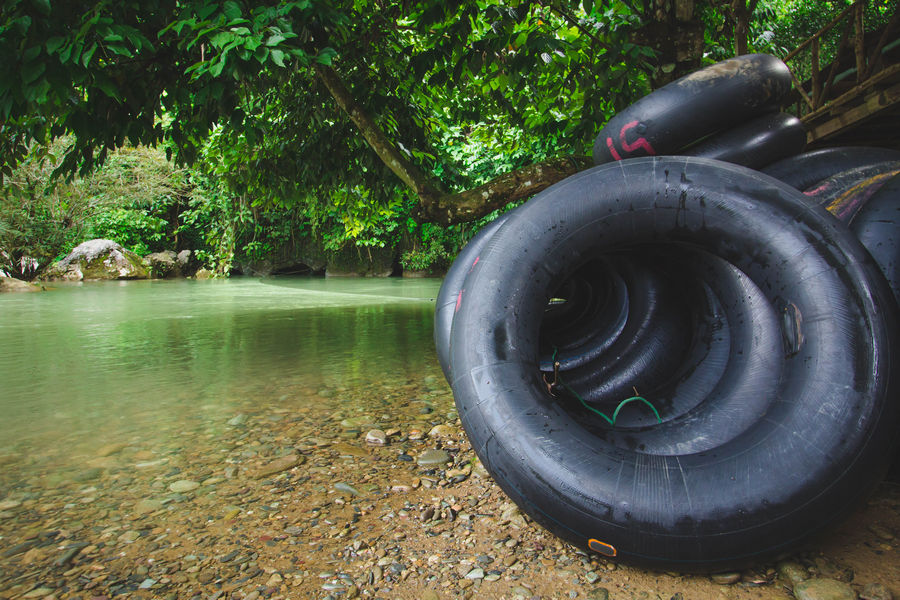
However, Vang Vieng isn’t just about getting the tubing t-shirt in a been there done that manner. There are so many more places to discover around the village such as caves, swimming holes, and waterfalls.
The Blue Lagoon is a freshwater swimming hole located about 10 kilometers to the south west of town. Hire a bicycle in town and cycle out across the bridge near the center of the village. Though nothing like the incredible Blue Lagoon in Vanuatu, it is still a nice spot to hang out for the afternoon with a group of friends.
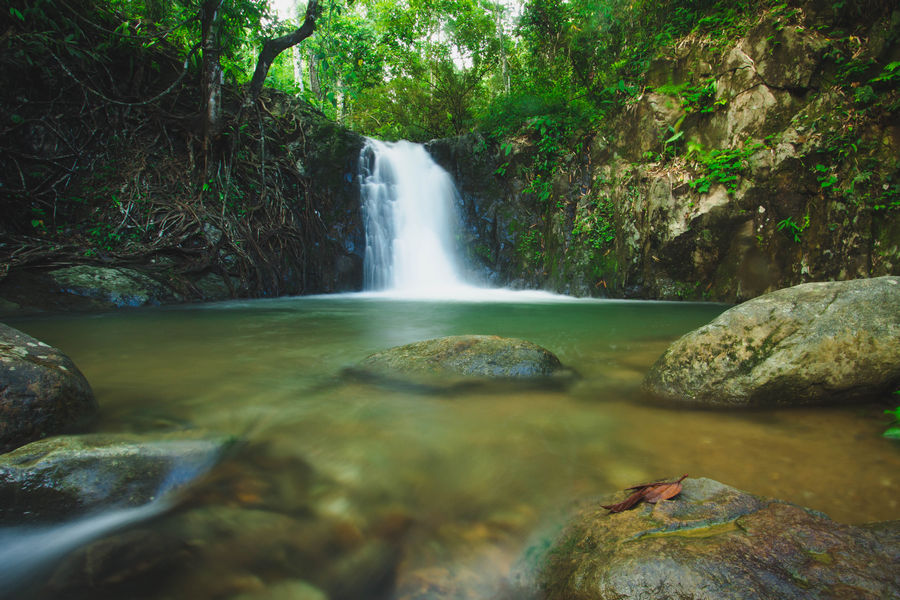
Venture east of town by bicycle and you will find the Kaeng Nyui waterfall. The waterfall is about a 10-minute walk from the entrance. I suggest bringing water with you. I made the mistake of drinking the water from the waterfall itself and terrible water poisoning sickness for the next four days.
If you’re burnt out by traveling already, then laze back at one of the many TV restaurants in town. Get a huge baguette, a fruit smoothie and watch 10 episodes in a row of Family Guy or Friends. No one says you must be on an adventure every day.
Stay here: hotels in Vang Vieng
Luang Prabang (Days 7 to 9)
Luang Prabang is the second largest city in Laos. It is located 4hrs north of Vang Vieng by minivan (tickets and timetables).
The city of Luang Prabang is built on a slice of land surrounded by the Mekong River and the Nam Khan River. It is a spectacular ancient city with mountain ranges all around.
One of the most iconic things to see in Luang Prabang is the early morning procession of monks. At about 6 am each morning thousands of monks will walk the streets with the alms to accept food offering from the people. Foreigners can also make offerings.
Note: it is important to offer food and not money. You can easily buy sticky rice or bananas from the locals in the morning.
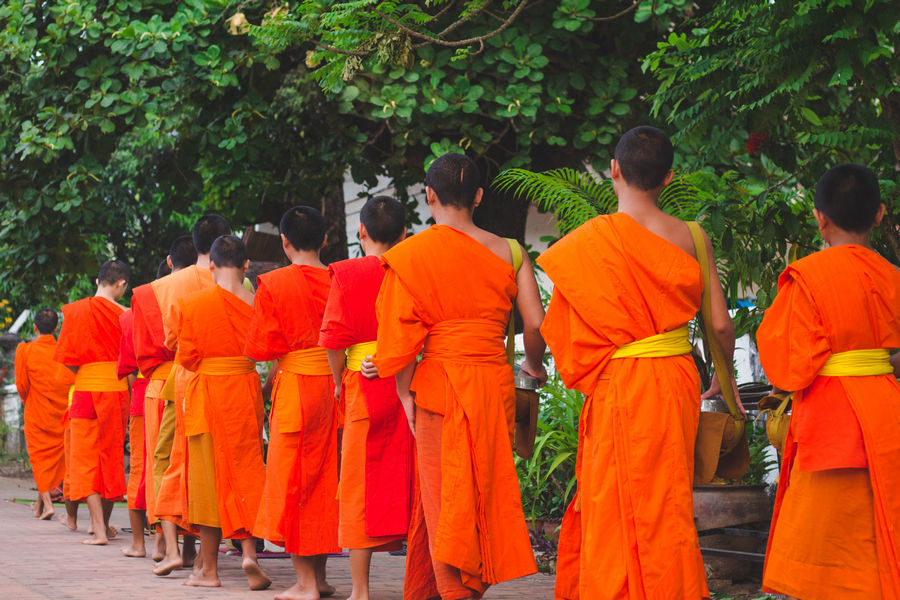
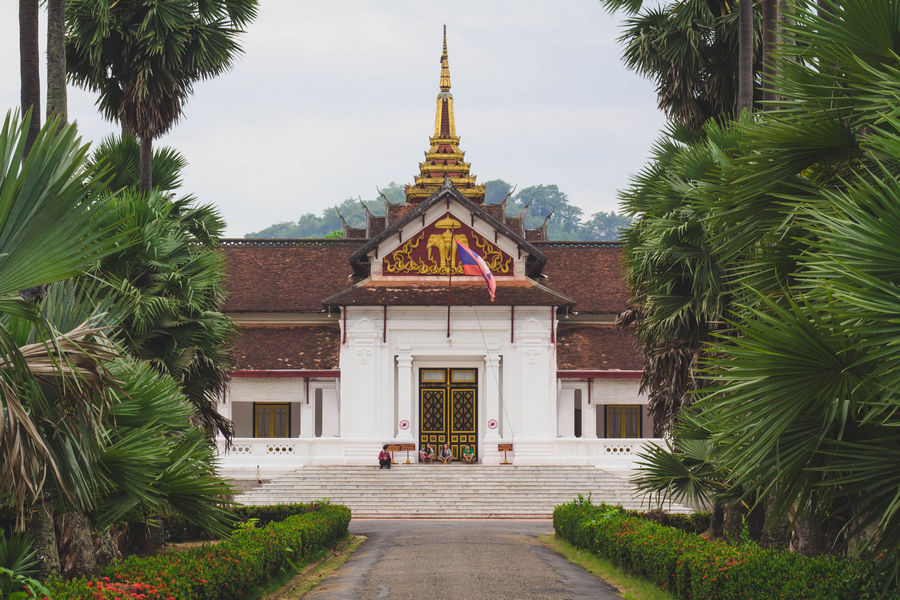
If you really want to give back to the community then spend a few hours at a temple teaching English to the monks and the kids. You don’t have to sign up for any volunteering program to offer this. Remember to dress appropriately before entering a temple.
Later in the day, make a trip out to the Luang Prabang Waterfall, officially known as the Kuang Si Falls.
The Kuang Si Falls is similar to the Erawan Waterfall in Thailand but beautiful on a whole new level. The Kuang Si Falls is located about 30 kilometers from Luang Prabang and best visited by hopping on a songtaew (pick up truck style taxi).
Stay here: hotels in Luang Prabang
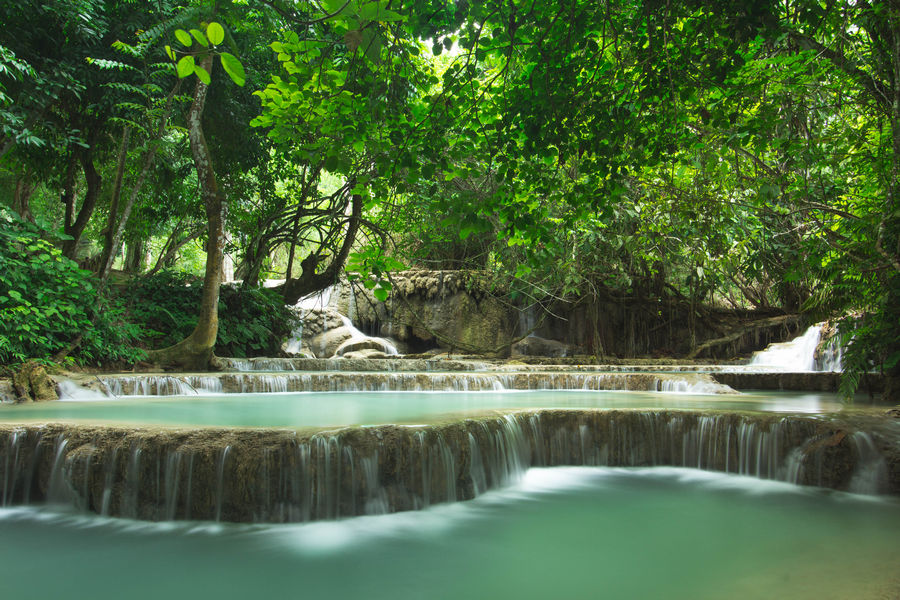
Nong Khiaw (Day 10)
Nong Khiaw is a small village located along the Nam Ou River. It is about 3 hours north of Luang Prabang by a minivan.
The village, like most of Laos, has a laid-back vibe. There are a few small guesthouses along the river where you can find more information about traveling further upstream to Muang Ngoi.
My favorite time in Nong Khiaw was spent playing football with the local kids or giving them bicycle rides around the place. Visit the local restaurants around town where you can try the local delicacy Ox Tounge. It’s actually really good!
Stay here: hotels in Nong Khiaw
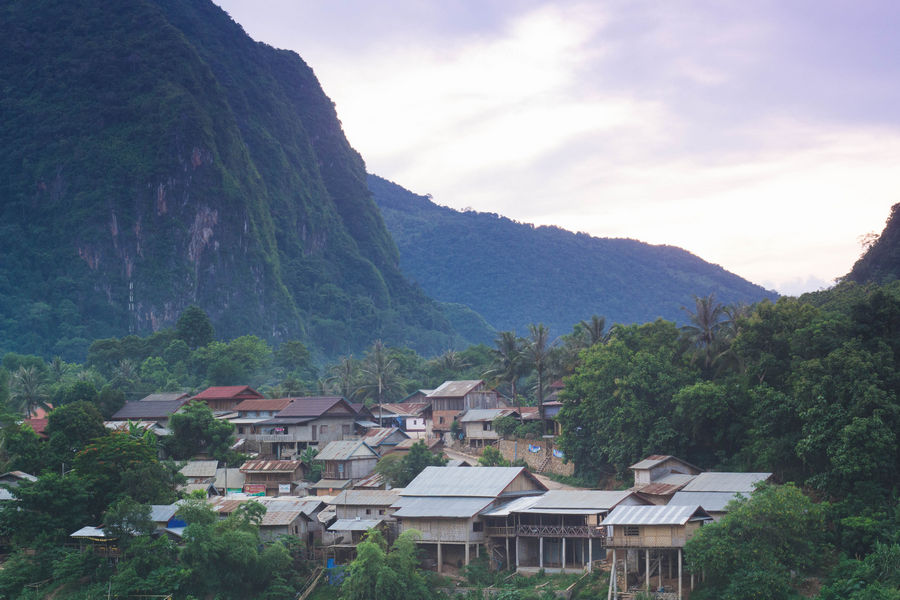
Muang Ngoi Neau (Days 11 to 13)
This tiny riverside village was one of the highlights of my time in Laos. At the time of visiting it was only accessible by longtail boat coming upstream from Nong Khiaw. There was also no electricity, however, I’ve heard things have changed recently.
Muang Ngoi is traditionally a fishing village. The men get up early at around 4 am to head out fishing on the river. When they return in the mid-morning, ask them to arrange a fishing trip for you. They will happily take you upstream in a longtail boat and teach you to fish the traditional way with a hand-thrown net. It’s a great local experience, and you get to eat the fish you catch.
Hike east of Muang Ngoi into the mountains where you will find ethnic villages in the jungle. The people live a rudimentary life in houses made of thatch and wood, completely without electricity, and shower in the river. You can do these hikes either solo and even stay overnight in the village.
After doing the hard legwork, chill out at your guesthouse or a restaurant along the river. The village is built on the upper river banks with some spectacular views of the Laos countryside. Even when raining it is a beautiful scene to watch.
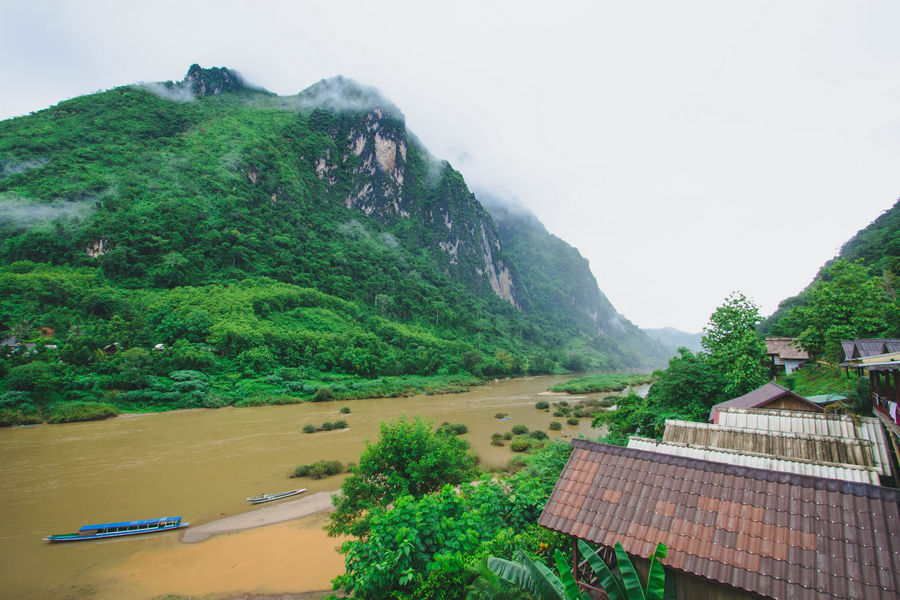
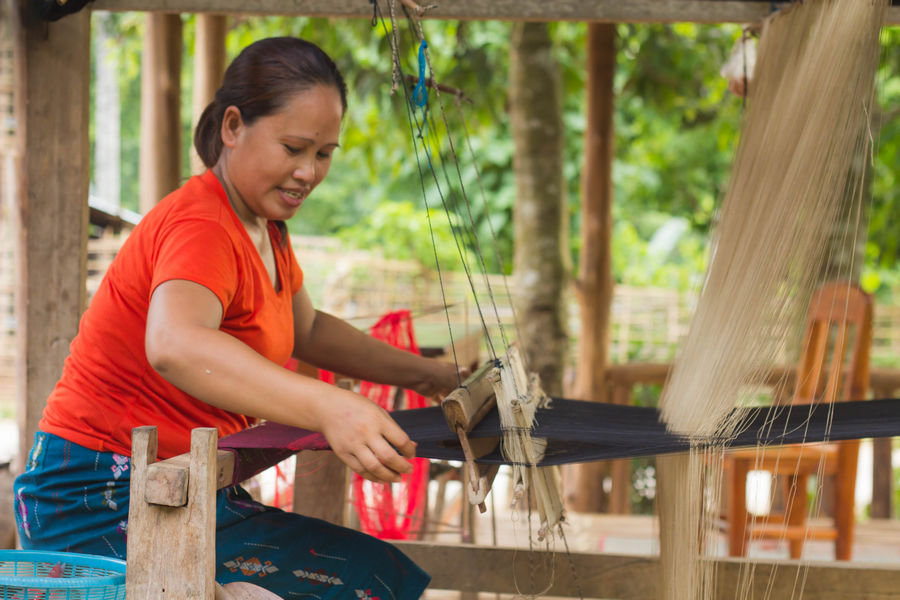
Luang Namtha (Day 14)
In the north of Laos, you will find the city of Luang Namtha. It is a 5-hour bus trip from Nong Khiaw along a winding and badly potholed road. I don’t often get car sick, but this trip is enough to make anyone feel a bit of nausea. Don’t do it hungover.
Most travelers don’t venture this far north. If you do, well done, and thanks for following my Laos travel itinerary this far.
Not saying there isn’t much to do in Luang Namtha, perhaps I just didn’t find it. Most people tend to use Luang Namtha as the launching point for adventures further north in Laos, such as Muang Sing or Phongsali. More on that below.
What I will suggest is that you visit the night market in Luang Namtha. The night markets in Southeast Asia always have the widest selection of food, at the cheapest prices (local prices).
I recommend trying the favorite local dishes such as somtam papaya salad, sticky rice, and the barbecues meats. Laotian food is very similar to Isan food in Thailand. Expect full on spicy dishes with a lot of chilies.
Stay here: hotels in Luang Namtha
Muang Sing (Days 15 to 17)
Muang Sing is located another 70 kilometers north of Luang Namtha. You can get here by either a minivan or by hiring a motorbike in town. If you are confident on a motorbike, I highly recommend it. The ride will take about 2 to 3 hours, depending on how often you stop.
Although in quite a poor condition, the roads between Luang Namtha and Muang Sing are beautiful! You will ride past many ethnic villages, where ladies sell fresh fruit by the roadside, and kids want to run out to say hello. It is a great authentic experience to have.
The huge area to the south of Muang Sing is known as the Nam Ha Biodiversity Region. Here, if you look hard enough, you will find totally off grid ethnic villages. The roads in this region are nothing more than small dirt trails. Going solo, you need to be pretty confident with a motorbike and prepared to get totally lost. If this is a bit beyond your comfort zone, then talk to the people at Phou Iu Bungalows for trekking options.
Maung Sing is also a great place to just experience local Laotian life in the countryside. The main industry is rice growing, and the majority of this is powered by hand and buffalo instead of machinery.
While around the outskirts of town we randomly joined a family planting a field of rice, check out the video below. They then invited us to back to their restaurant in town to enjoy local foods and a few cold bottles of Beer Laos.
The saying “Beer Laos Happy Happy” will stick with me forever!
Stay here: hotels in Luang Namtha
Continuing Your Journey
From Muang Sing, there are a few routes you can take. Continue in Laos by returning to Luang Namtha, then make a trip to Phongsala in the northeast. With the right paperwork, you could perhaps cross the border directly into Yunnan of Southern China.
I continued my journey by traveling back to Luang Namtha, where I took a bus to Chiang Kong in Thailand. From there I continued my journey west to Chiang Mai, and eventually settled down in Chiang Rai for a few months.
Conclusions on Travel in Laos
Is two weeks in Laos enough time? Yes and no.
You will notice that I’ve covered only the northern half of Laos here, even that took more like two and a half weeks. This itinerary doesn’t even venture into the southern parts of Laos to places like the Tha Khek Motorbike Loop, or Don Det and the 4000 Islands. That’s another two-week adventure in Laos.
However, the northern parts of Laos I have mentioned are amazing. You will experience an authentic culture, with truly happy people. Great food, great beer, great landscapes, and ultimately a great trip to make.
I can’t wait for my next trip to Laos.
What is your favorite destination in Laos?
Note: this post contains affiliate links. You will not be charged any extra for purchases you make via these links, however, I will get a small commission from the hotel.
